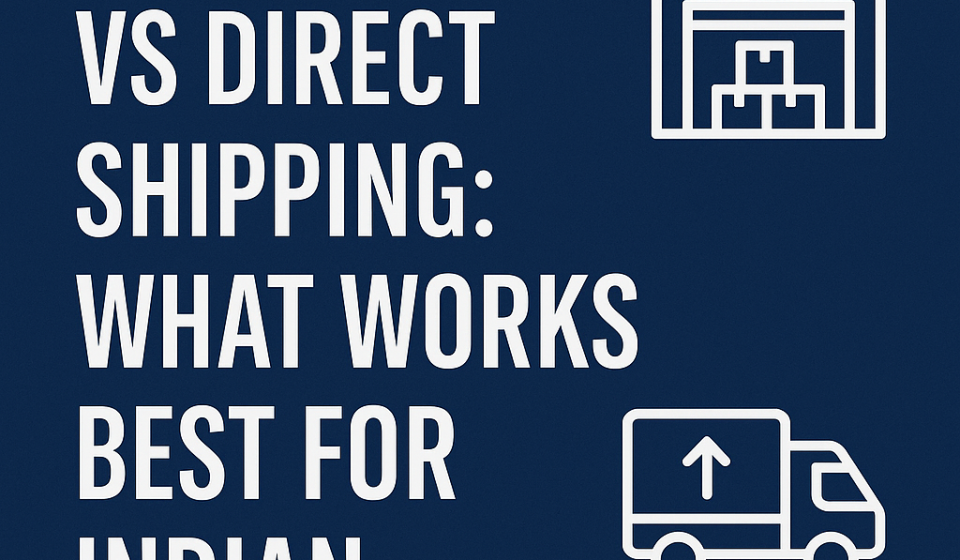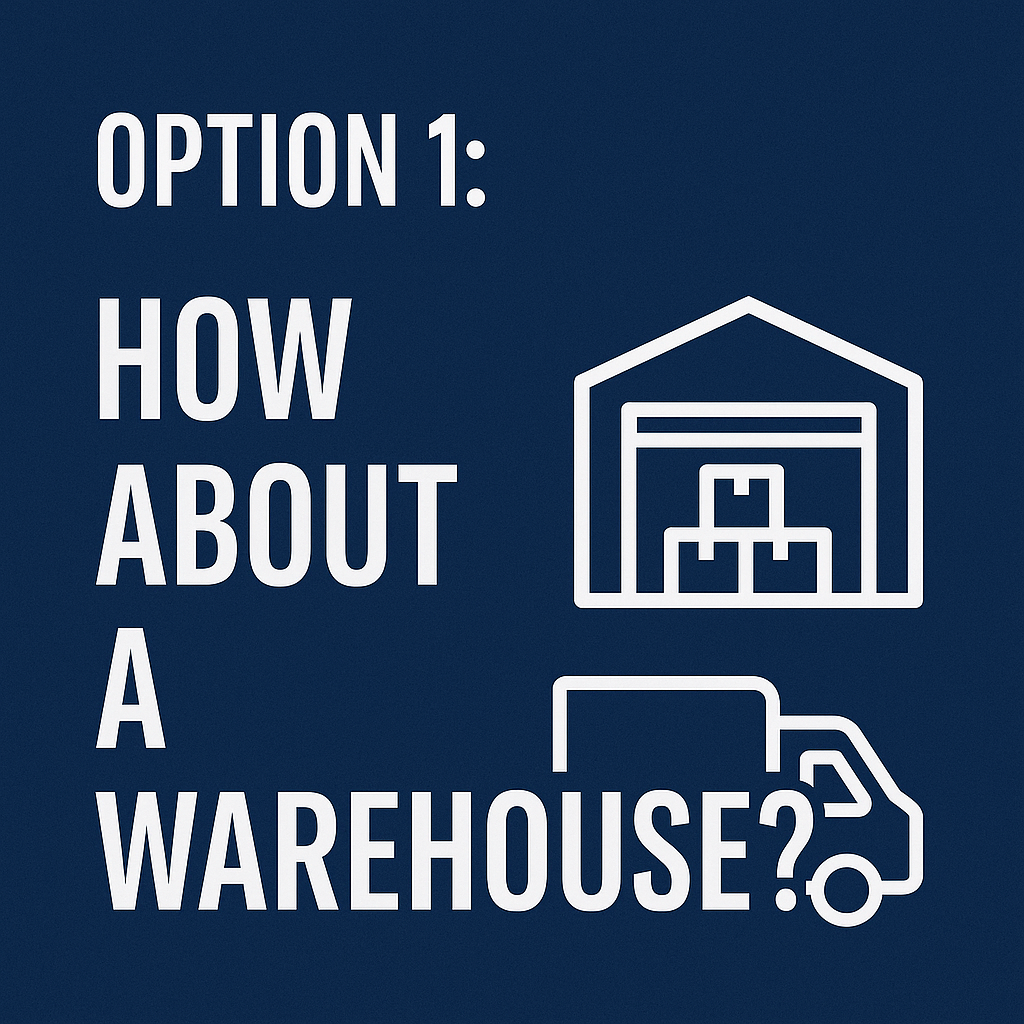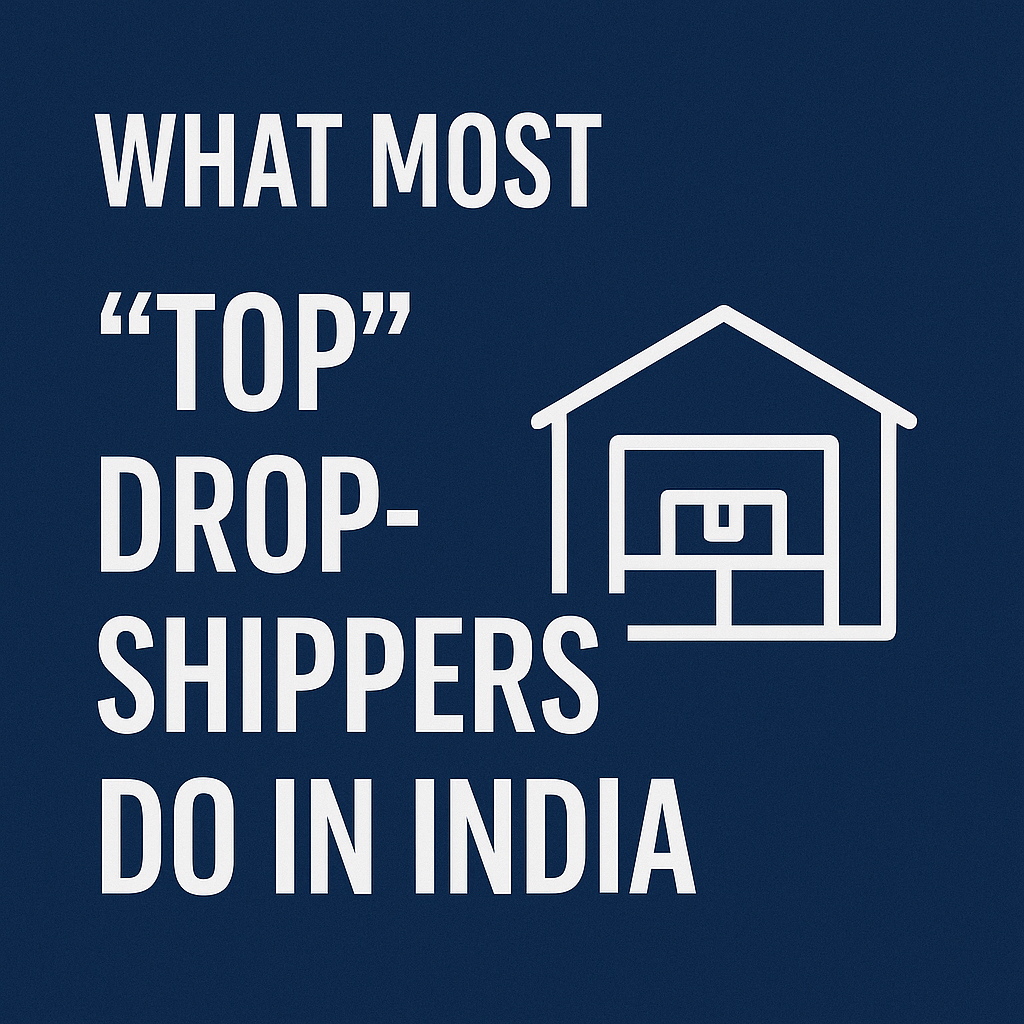
Warehouse vs Direct Dropshipping in India: 5 Brutally Honest Pros & Cons You Need to Know in 2025”
Let’s talk Warehouse vs Direct Dropshipping and fulfillment the part most newbies ignore until RTOs start killing their margins.
Table Of Content
- Option 1: Direct Shipping (The Typical Dropshipping Way)
- When to Use It
- Option 2: Warehouse Model (Stock First, Ship Fast)
- When to Use It
- COD + RTO: The Deciding Factor
- What Most Top Dropshippers Do in India
- Hybrid Model (For Smart Scaling)
- What to Ask Your Warehouse Partner
- Long-Term Brand Play (Why Warehouse Wins Here Too)
- Final Verdict on Warehouse vs Direct Dropshipping: Which One is Better?
If you’re building a dropshipping store in India, there’s one big fork in the road you’ll hit:
- Warehouse model: You buy and hold stock in India and ship locally, or
- Direct shipping: You take orders and your supplier ships it out, one-by-one
Both work. But not for everyone, and definitely not at every stage.
Pick wrong and you’ll be stuck chasing lost parcels, handling refund messages, and burning ad money for nothing.
Pick smart and your backend runs smooth, customers get their orders fast, and you actually keep more of your profit.
So here’s a straight-up breakdown. Real talk. No fluff. Let’s get into it.
Option 1: Direct Shipping (The Typical Dropshipping Way)

This is what almost every beginner starts with — and it’s fine for short-term learning.
- You get an order
- You forward it to your supplier (probably from GlowRoad or Meesho)
- They pack it (however they want) and ship it directly to your customer
You’re basically acting as the middleman. Low commitment. Easy to start.
✅ Pros:
- Zero upfront inventory cost — you don’t need ₹1 in stock
- Launch a store in 24 hours — just pick a product and run ads
- You can test 10 different products without any risk
❌ Cons:
- Supplier might take 3–5 days just to ship — customer already forgot they ordered
- RTOs are high because delivery takes too long and people lose interest
- You can’t control packaging, so the experience feels cheap
- No branding = no trust = no repeat buyers
When to Use It:
- You’re brand new and just trying to understand what sells
- You want to test 3–5 random products with minimal spend
- You don’t have storage, capital, or experience yet
This model is great for validation, but not for growth. Don’t try to scale a store using direct shipping unless you’re okay with chaos — RTOs, delays, angry DMs, and zero control.
Use it like a test mode. Learn fast. Then switch gears.
Option 2: Warehouse Model (Stock First, Ship Fast)

This is what serious players move to once testing is done.
- You bulk order stock (after seeing consistent sales)
- Store it at a warehouse or fulfillment center (Shiprocket Fulfilment, NimbusPost, or even your own space)
- Ship orders directly from there — same-day or next-day
Now you’re not just reselling — you’re building actual backend structure. Real business moves.
✅ Pros:
- Super-fast delivery (3–6 days all over India), which means higher trust and faster repeat orders
- Your RTOs drop dramatically — because customers actually remember ordering
- You control the unboxing — branded packaging, freebies, notes, whatever
- Can run prepaid-only or mixed offers with better control
- Looks and feels premium, builds brand recall
❌ Cons:
- You need upfront cash to order inventory
- If your product stops selling, you’re stuck with stock
- You can’t guess — you need data to back your inventory call
When to Use It:
- You’ve tested and found a product that’s working every day
- You’re getting 10+ orders/day and scaling steadily
- You want to build an actual brand and not be just another Meesho clone
This model gives you power. You move fast, control quality, reduce refund mess, and create a real experience for the buyer. It’s not the easiest — but it’s the only way to scale profitably without pulling your hair out.
Once you switch to warehouse, you’ll never want to go back to supplier-led chaos.
COD + RTO: The Deciding Factor
In India, COD rules the market. And COD means RTO risk.
With direct shipping:
- Dispatch delay = customer cools off
- Low trust = they reject the parcel
With warehouse:
- Delivery is quick
- You can confirm via WhatsApp/SMS before dispatch
- Your RTOs drop like crazy
So if you’re tired of wasting ad spend on orders that never land, consider the warehouse move.
What Most Top Dropshippers Do in India

Here’s how smart Indian sellers operate:
- Start with direct shipping for product testing
- Once a product hits 15–20 orders/day consistently, switch to warehouse
- Negotiate better rates for bulk
- Add branding and packaging
- Optimize margins and scale with confidence
It’s not either-or. It’s phase 1 vs phase 2.
Hybrid Model (For Smart Scaling)
Not everything has to be black or white. One underrated setup? The hybrid model.
Here’s how it works:
- Test 5 products using direct shipping
- Find your top 1–2 performers
- Move those to warehouse
- Keep testing more via direct shipping in parallel
You’re building a pipeline while scaling your core product. It’s like running an engine with a fuel line and a backup tank. You never stall.
✅ This model is what smart 7-figure sellers use. Keeps growth aggressive but controlled.
What to Ask Your Warehouse Partner

Once you’re ready to shift, don’t blindly sign up for a warehouse. Ask the right stuff:
- What’s the average dispatch time?
- Do they integrate with Shopify/GlowRoad?
- Can they do custom packaging?
- How do they handle returns?
- Do they support COD or only prepaid?
Compare 2–3 options like Shiprocket Fulfilment, NimbusPost, Pickrr Plus, or even local 3PLs.
✅ Don’t go with the cheapest one. Go with the most consistent.
If their handling sucks, your brand takes the hit — not theirs.
Long-Term Brand Play (Why Warehouse Wins Here Too)
If your goal is to build a legit brand that people remember, direct shipping will never get you there.
Why?
- You can’t control packaging
- You can’t control delivery experience
- You can’t do upsells, inserts, or create brand recall
But with a warehouse setup:
- You can add freebies, thank-you cards, flyers
- You can deliver fast and message customers when it’s out for delivery
- You can retarget for repeat purchases with solid backend support
✅ This is how you go from 10K/month to 5L/month. You stop being a product pusher and start running a brand engine.
Final Verdict on Warehouse vs Direct Dropshipping: Which One is Better?
Let’s not overcomplicate it.
If you’re new: Go with direct shipping. It’s fast, flexible, and gives you breathing room to test. Don’t waste time worrying about logistics before you even know what product works. Just validate fast and cheap.
But if you’re serious about scaling: Get out of that supplier-led chaos as soon as you can. The minute you hit 15–20 orders/day and start seeing consistent ROAS, it’s time to move to warehouse. No excuses.
Direct shipping is your entry gate. It’s the playground. But warehouse is where real growth starts.
✅ You want control? Go warehouse. ✅ You want fewer refunds, faster delivery, and actual brand perception? Go warehouse. ✅ You want to stop hearing “sir parcel kab aayega?” — yeah, warehouse.
This is how real Indian dropshippers scale: test lean, switch early, and tighten backend before pushing heavy traffic.
You’re not here to play middleman forever. Move like a business, not a hobby.
👉 Follow Dropshipping.blog for no-BS guides, real insights, and dropshipping content tailored for India — not some random US model that doesn’t even apply here.




